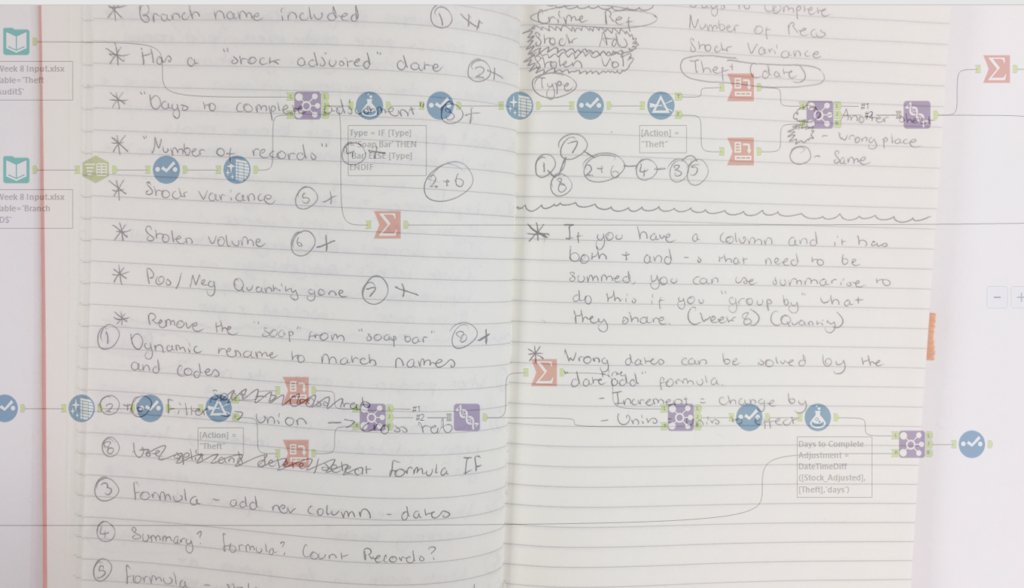
During DS17’s first week we’ve been plunged into the weird and wonderful world of Alteryx. Since the application process is decidedly Tableau-heavy, you can imagine our trepidation at spending an entire week learning the basics of Alteryx.
Funnily enough, most of us have realised that, actually, we wish we’d have been able to use Alteryx much sooner. Hours upon hours of our lives spent altering Excel files could’ve been mere minutes if we’d had access to Alteryx when we were doing our initial applications. This obscure and alien piece of software has suddenly become our best friend.
Alteryx is a very different beast from Tableau and that’s taken some getting used to. What’s important to remember in Alteryx is that everything must follow logically in order to work. It’s a bit like those high school introductory algebra classes. For example:
Z = X + Y
X = 5 + 5
Y = 7 – 3
You have to work out the value of X and Y before you can work out the value of Z. And so before you dig in creating a workflow in Alteryx and give us Z, you need to work out X and Y first.

Above is a typed up version of what I scribbled in my notebook, trying to tackle Coach Carl and Jonathan Allenby’s Week 8 Data Prep Challenge. Basically, any data prep work you’re doing in Alteryx will fall into one of two categories: an Alteryx-challenge where you’ll have an ‘outcome’ you’re meant to match, or you’ll simply have messed up data you need to sort out.
Obviously the latter is much more likely.
Essentially, what I did was create a three-way system:
- the first step was to identify issues/differences and create a list, as long as necessary, and put a number next to each point.
- write the number down and decide how you’re going to solve each issue/difference and what tools you are going to/might use.
- decide which order makes the most logical sense and then use that when you’re doing your workflow.
Of course, once reality bites and you get into Alteryx, you might realise that some of the stuff you’ve written down is useless/makes no sense and you might have to tinker with it in real-time, but that’s not a problem. What’s important is that you have a plan you can action.
One big advantage of this system, that might not be immediately obvious, is that it forces you to really look into your data and really get to know it (KYD: know your data!).
If you’re wondering how to get started with the confusing world of Alteryx, then I hope this system might prove as useful to you as it has to me.
